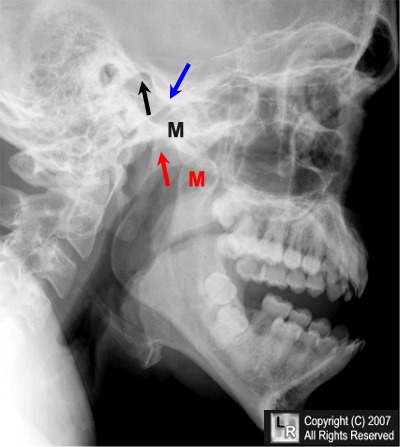|
|
Dislocation of the Mandible
- Dislocations of the mandible tend to be uncomfortable but not severely painful for the patient
- The presence of a fracture increases the pain
- Patients are unable to close mouth completely
- Difficulty speaking and, possibly, swallowing
- Dislocations may be unilateral or bilateral
- Prognathic appearance to jaw when both are dislocated
- Shallow mandibular fossa may predispose to dislocation
- Connective tissue diseases like Marfan’s or Ehlers-Danlos may have increased risk
- Those with previous dislocations are at much greater risk for repeat dislocation
- May eventually result in osteoarthritis in TM joint
- Most dislocations occur spontaneously on opening the mouth widely for yawn, dental work, during seizure
- Trauma may also produce dislocation
- Trauma involves a downward force on partially opened jaw
- Normally, the mandibular condyle lies in the mandibular fossa of the temporal bone when the mouth is closed and moves forward slightly when the mouth is open
- When dislocated, mandibular condyle moves forward and lies anterior to the articular eminence which prevents its return to the mandibular fossa of the temporal bone
- Imaging findings
- Conventional radiography is usually diagnostic
- Mandibular condyle lies anterior to the articulate eminence on one or both sides
- Manual reduction is usually performed with sedation
- Success is evident as patient can close mouth
- There is a risk of fracture of the mandible during reduction

Dislocated mandible. Both mandibular condyles (labeled M) are dislocated anterior to
their respective mandibular fossae (red and black arrows) in the temporal bones. The blue arrow
points to the articular eminence
which prevents the mandibular condyle (black M) from relocating
in the mandibular fossa (black arrow).
For the same photo without the arrows, click here
|
|
|